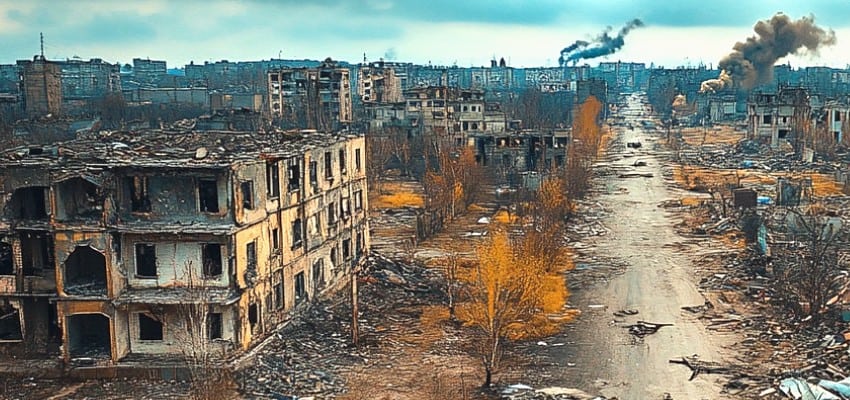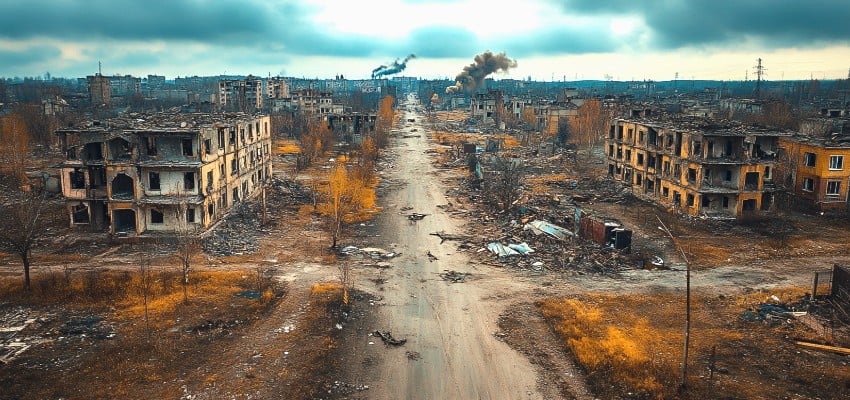Editor’s Note: This article offers a detailed narrative synthesis of the Institute for the Study of War’s June 7, 2025, Russian Offensive Campaign Assessment, providing a comprehensive examination of the ongoing Russo-Ukrainian War through the lens of battlefield developments, strategic military postures, and geopolitical signaling. Highlights include an overview of the Kremlin’s disinformation campaign regarding prisoner of war and KIA body repatriations, U.S. policy responses including potential expanded sanctions, and operational movements across the northern, eastern, and southern fronts. Special attention is given to Ukrainian gains near Toretsk, Russian advances in Sumy and Donetsk Oblasts, and a significant escalation in air and drone attacks targeting Kharkiv and other urban centers. This summary is intended to inform professionals engaged in geopolitical risk analysis, defense intelligence, and international legal strategy with a fact-based, contextually enriched account of events shaping the trajectory of the conflict.
For those seeking to grasp the full scope of this evolving landscape, the complete updates from the Institute for the Study of War serve as an invaluable resource.
Content Assessment: Strategic Posturing and Disinformation: A Familiar Kremlin Tactic in the Russo-Ukrainian War
Information - 94%
Insight - 92%
Relevance - 90%
Objectivity - 94%
Authority - 95%
93%
Excellent
A short percentage-based assessment of the qualitative benefit expressed as a percentage of positive reception of the recent article from ComplexDiscovery OÜ titled, "Strategic Posturing and Disinformation: A Familiar Kremlin Tactic in the Russo-Ukrainian War."
Background Note: ComplexDiscovery’s staff offers distinctive perspectives on the Russo-Ukrainian war and Middle Eastern conflicts, informed by military experience on the West German, East German, and Czechoslovakian border during the Cold War and in Sinai as part of Camp David Accord compliance activities. This firsthand regional knowledge has been further enhanced by recent staff travels to Eastern European countries, including Estonia, Finland, Latvia, Lithuania, and Poland. These visits have provided up-to-date, on-the-ground insights into the current geopolitical climate in regions directly impacted by the ongoing conflict.
Combined with cybersecurity, information governance, and eDiscovery proficiency, this multifaceted experience enables comprehensive analysis of these conflicts, including the critical impact of cyber warfare, disinformation, and digital forensics on modern military engagements. This unique background positions ComplexDiscovery to provide valuable insights for conflict-related investigations and litigation, where understanding the interplay of technology, data, and geopolitical factors is crucial.
Russo-Ukrainian Conflict Update*
Strategic Posturing and Disinformation: A Familiar Kremlin Tactic in the Russo-Ukrainian War
ComplexDiscovery Staff
On June 6 and 7, 2025, Russian officials launched a calculated disinformation campaign by accusing Ukraine of failing to proceed with a prisoner of war (POW) exchange and the repatriation of killed-in-action (KIA) soldiers’ remains—allegations swiftly refuted by Ukraine. Russian representatives, including Presidential Aide Vladimir Medinsky and Deputy Defense Minister Alexander Fomin, claimed readiness to proceed with agreed exchanges, alleging Ukrainian absence at a Belarusian border handoff point. Ukrainian authorities, however, clarified that no firm date had been established and that lists for the exchange were still under negotiation.
This disinformation aligns with the Kremlin’s persistent effort to erode confidence-building measures and signal a lack of genuine interest in peace. Furthermore, Russian Deputy Foreign Minister Sergei Ryabkov accused Western governments, particularly Germany, of sabotaging peace talks, reinforcing narratives that frame NATO and the EU as warmongers to domestic Russian audiences.
U.S. Policy and Putin’s Theory of Victory
In a parallel development, U.S. President Donald Trump indicated potential support for additional sanctions on Russia under the bipartisan Sanctioning Russia Act of 2025, now boasting 82 Senate co-sponsors. While this policy shift represents a notable change in Washington’s posture, the ISW assesses that economic pressure alone is unlikely to coerce Russian President Vladimir Putin to negotiate or abandon his objectives.
Putin’s theory of victory remains anchored in battlefield endurance—betting on the attritional capacity of Russian forces and the eventual fatigue of Western political will to support Ukraine. Sustained Western military assistance, particularly in advanced weapons systems, is deemed crucial to altering the strategic calculus in Kyiv’s favor.
Battlefield Dynamics: From Sumy to Donetsk
Tactically, the frontlines on June 7 illustrated a continuation of Russia’s multi-pronged offensive strategy. Russian forces made modest gains in Sumy Oblast, particularly in areas like Kindrativka and Yablunivka, threatening Ukrainian defensive depth north of the city. Russian airborne and naval infantry units were reportedly active, along with the involvement of Chechen “Akhmat” Spetsnaz elements. Ukrainian counterattacks were noted but yielded limited territorial impact.
In Kharkiv Oblast, Russian forces conducted operations near Vovchansk and Lyptsi but failed to achieve significant breakthroughs. The use of specialized Spetsnaz and VDV units underscores Russia’s persistent efforts to push Ukrainian positions back from artillery range near Kharkiv City.
Meanwhile, Russian advances in Luhansk Oblast centered on the Kupyansk and Borova directions. Although geolocated footage confirmed movement north of Dvorichna, most offensive efforts did not yield new confirmed territory. The Russian Lyman axis remained active with reported engagements near Zelena Dolyna and Torske, though again without confirmed progress.
Donetsk Oblast presented a mixed picture. Ukrainian forces made a rare, confirmed advance in northern Dyliivka near Toretsk, offering a symbolic morale boost. Conversely, Russian forces mounted persistent, though largely unsuccessful, attacks across the Chasiv Yar, Pokrovsk, and Siversk axes. However, geolocated evidence did confirm limited Russian gains in Novoserhiivka and southeastern Komar.
Southern Fronts and Aerial Onslaught
The southern axis remained volatile but largely unchanged in territorial terms. In western Zaporizhia Oblast, Russian forces attacked Ukrainian positions near Orikhiv and Kamyanske without confirmed success. Likewise, limited engagements occurred in Kherson Oblast with Russian artillery from the 80th Arctic Motorized Rifle Brigade targeting Ukrainian positions across the Dnipro River.
The air and missile domain witnessed one of the heaviest assaults in recent months. On the night of June 6 to 7, Russian forces launched over 200 Shahed drones, ballistic and cruise missiles in a coordinated strike targeting Ukrainian infrastructure. Notably, Kharkiv City suffered its largest aerial attack since the war’s outset, with civilian casualties and widespread damage. Ukrainian air defenses managed to intercept a significant portion, but the intensity of the barrage indicates Moscow’s continued emphasis on strategic bombing to sap Ukraine’s morale and logistics.
A Grinding War of Attrition
Cumulatively, the June 7 battlefield update presents a clear picture of a grinding war of attrition. Russia seeks marginal gains across numerous axes to stretch Ukrainian resources, while concurrently waging a global propaganda war aimed at fracturing international support for Kyiv. Ukrainian forces, although strained, continue to conduct localized counteroffensives and leverage advanced Western systems to deny Russia broader operational success.
From the Donetsk fields to the Sumy forests, the tactical stagnation betrays a strategic patience from the Kremlin—one that anticipates Western disunity and domestic political changes as potential vectors for success. In contrast, Ukraine’s path to a favorable peace lies in eroding Russian combat capabilities faster than Moscow can replenish them, requiring unyielding international solidarity.
Holding the Line or Shifting the Paradigm?
As June unfolds, the Russo-Ukrainian War teeters between static attrition and potential escalation. While both sides maneuver for tactical advantage, it is clear that neither has secured a decisive edge. In this context, Western political decisions—particularly regarding continued aid and sanctions—will significantly influence the course of events. Will Ukraine be given the tools and time to turn the tide, or will Moscow’s strategy of slow suffocation prevail?
Detailed Reporting with Maps for June 7, 2025, from the ISW – Mouseover to Scroll
Russo-Ukrainian War June 07 2025 UpdateReview the Detailed Reporting and Maps PDF
About the Institute for the Study of War Research Methodology
ISW’s research methodology relies on both primary and secondary sources, enabling researchers to develop a comprehensive understanding of the situation on the ground. In order to analyze military and political developments in any given area, ISW’s research analysts must wholly understand the systems of enemy and friendly forces. They must also understand the population demographics, physical terrain, politics, and history of that area. This lays the analytical foundation for understanding the reasons for particular developments and fulfilling their assigned research objectives. ISW analysts also spend time in places like Iraq, Afghanistan, and elsewhere in order to gain a better understanding of the security and political situation and to evaluate the implementation of current strategies and policies. Their researchers compile data and analyze trends, producing a granular analysis of developments in areas of research, producing an accurate, high-resolution, timely, and thorough picture of the situation. ISW’s research methodology guarantees its success and commitment to improving the nation’s ability to execute military operations, achieve strategic objectives, and respond to emerging problems that may require the use of American military power.
About the Institute for the Study of War
The Institute for the Study of War advances an informed understanding of military affairs through reliable research, trusted analysis, and innovative education. They are committed to improving the nation’s ability to execute military operations and respond to emerging threats in order to achieve U.S. strategic objectives. ISW is a non-partisan, non-profit, public policy research organization.
Learn more, get involved, and contribute today.
Assisted by GAI and LLM Technologies
* Sourced and shared with direct expressed permission from the Institute for the Study of War (ISW).
Additional Reading
- From Dissent to OSINT? Understanding, Influencing, and Protecting Roles, Reputation, and Revenue
- Data Embassies: Sovereignty, Security, and Continuity for Nation-States
Source: ComplexDiscovery OÜ



























